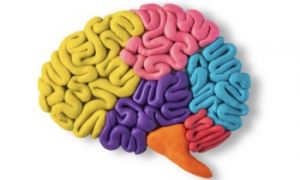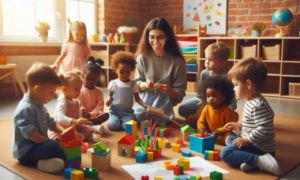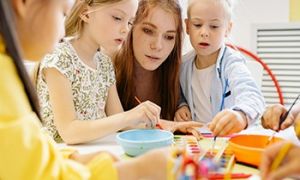Children are more likely to be confident and involved learners when their family and community experiences and understandings are recognised and included in the early childhood setting. The following article provides activities to promote each of the sub-outcomes of EYLF Outcome 4 - Children Are Confident And Involved Learners.
Activities To Promote EYLF Outcome 4
- 4.1 Children develop dispositions for learning such as curiosity, cooperation, confidence, creativity, commitment, enthusiasm, persistence, imagination and reflexivity.
Education experts have now realised that much more than the content of learning – like numeracy, literacy and science concepts – it is the acquiring of learning dispositions that ensure the best academic outcomes in the long run. Learning dispositions can be understood as enduring habits of mind and actions that affect how students approach learning.
Early educators can nurture these by responding to children’s display of learning dispositions, commenting on them and providing encouragement and additional ideas. So for example, as a child plays with a shiny pebble, describe the actions with appropriate words, like “I see you turning and looking at this beautiful thing” and then offer a descriptive vocabulary for the object that notes its colours, textures and other appropriate features like, ‘heavy’, ‘shiny, ‘cool’, ‘smooth’ and see if they can be encouraged to use it to decorate a doll’s house, knock it against another surface or a model for still life art. This recognises and responds to the child’s learning dispositions like curiosity, enthusiasm, imagination, creativity and confidence.
The role of an enriching learning environment cannot be over-emphasised in building learning dispositions in young children. Educators can do this by providing learning environments that are flexible and open-ended; this can either be done intentionally, like keeping stones at certain places in the classroom to invite structured discussions about types of rocks and their features. Alternately, educators may be more facilitators allowing children to choose their own activities like going on a nature walk where they are free to touch leaves, dig for worms, and turn over rocks. However, even in such child-led activities, the educator may use intentional cues to inspire wonder and questions about plant decomposition and what worms eat as a way of scaffolding learning and discovery.
One of the most effective ways to implement this Learning Outcome is to listen carefully to children’s ideas and discuss with them how these ideas might be developed. So, if an educator finds quite a few children interested in stamps, they might use questions like “How do you think letters can reach the right people across long distances” or “Why do people need to pay to send letters?” to create deeper engagement with the idea. Then children can be encouraged to investigate and look for answers with access to documentaries and books on stamps or by surfing online. Build-in activities like getting children to measure the size of the stamps or sort them by colour.
- 4.2 Children develop a range of skills and processes such as problem solving, enquiry, experimentation, hypothesising, researching and investigating
It is important that educators provide experiences that encourage children to investigate and solve problems, for example by reading or telling stories in which the major characters come upon obstacles. Pause at certain points in the narrative to ask your learners if they can think of ways to solve the character’s problems. Encourage a variety of suggestions and discuss possible consequences. Look for ways to relate the character’s dilemmas to events in the children’s own lives so that they have a deeper understanding of problem-solving scenarios.
One way that educators can implement this Learning Outcome is by recognising mathematical understandings that children bring to learning and building on these in ways that are relevant to each child. For example, when young children begin to use symbols, such as numbers and letters (often mixed up) in their drawings and paintings, educators can foster basic number understanding which involves the capacity to count and order objects as well as to compare quantities and divide objects into smaller parts. Thus children can be encouraged to find numerals in the environment and talk about their purposes, for example counting out table settings and sharing out portions when sitting down for lunch.
Another significant way that educators can implement Learning Outcome is to provide opportunities for involvement in experiences that support the investigation of ideas, complex concepts and thinking, reasoning and hypothesizing. For example, set up simple experiments and invite young learners to look for answers to questions like how flower petals ‘drink’ water or why leaves wilt on a hot day; indeed just a celery stalk, food colouring and a beaker of water would be enough for kids to learn about transpiration and cohesion. Take care though not to push through findings and explanations; instead, elicit conclusions on the basis of the children’s own observations. Indeed getting them to keep an observation diary with drawings, notes or photos will go a long way in strengthening a scientific disposition.
For children to become involved and confident learners, it is essential that they also acquire the necessary language. Thus educators can model mathematical and scientific language when teaching such concepts – for example, – like when children are sorting objects collected during a nature walk, help them to use words like ‘alike’, ‘same’, ‘different’, ‘belongs’, ‘doesn’t belong’. Again while conducting an experiment, instead of telling kids to “make observations”, ask “What does it look like”? Though some terms may be unavoidable, wherever possible, use simpler questions to clarify different concepts, like “what do you think will happen” and “did your guess turn out to be correct” to teach the difference between a hypothesis and a conclusion.
- 4.3 Children transfer and adapt what they have learned from one context to another
Educators can meet this Learning Outcome by supporting children to construct multiple solutions to problems and use different ways of thinking. For example, when children play with unstructured material like loose parts, logs and cardboard boxes, they are encouraged to use the same object in different ways. So in the space of a single hour, a stick can become a magic wand, a fishing rod, a spoon for stirring a stew or a bridge across a puddle for caterpillars. Such unstructured play enables children to create their own stories, experiment with roles, don multiple perspectives and push boundaries of the possible.
Yet another way educators can implement this Learning Outcome is by drawing children’s attention to patterns and relationships in the environment and in their learning. So as you set out on a nature walk with your young learners, call attention to leaf patterns and arrangements of petals on flowers and link them to design and numeracy that you may have discussed in class.
In order to support the transfer of learning in children, it is important for educators to value signs of children applying their learning in new ways and talk about this with them in ways that grow their understanding
So if you know that a child has figured out a way to stack nesting cups, the smaller in the larger, see if they can use a similar strategy when setting the table with crockery and cutlery or taking pails and other equipment to the sand play area. Notice and verbally remark how they were able to solve problems in a new situation by applying what they had already learnt in another context.
- 4.4 Children resource their own learning through connecting with people, places, technologies and natural and processed materials
Educators can implement this Learning Outcome by providing sensory and exploratory experiences with natural and processed materials. Thus they can help children explore different textures like wood, yarn, clay, chalk, string, fabric, board, foam, scented play dough, mint and herbs as well as colours for finger and feet painting. Natural materials like leaves, nuts, bark, sticks, pebbles, mud, clay, sand and water are inherently unstructured and can offer hours of delightful creative play.
One of the most meaningful ways that educators can implement this Learning Outcome is by carefully planning learning relationships so that children experience the benefits and pleasures of shared learning exploration. For example, you can group children for a play in a way that explores possibilities for peer scaffolding like when a toddler is having trouble completing a jigsaw puzzle, he/she can be paired with a child who you know can do it.
Since young children are growing up as digital natives, it is important for educators to develop their own confidence with technologies available to children in the setting. You can do this by attending professional training workshops on the use of ICT in ECE or by reading up on best practices and research findings on the subject. Above all, when introducing technology to children, model behaviours such as using technology to promote positive interaction and use digital tools collaboratively with children, families and other staff.
Further Reading:
The following article provides activities to promote each of the sub-outcomes of EYLF Outcome 1: Children Have A Strong Sense Of Identity: Activity Ideas To Promote EYLF Outcome 1
The following article provides activities to promote each of the sub-outcomes of EYLF Outcome 2: Children Are Connected With And Contribute To Their World. Activity Ideas To Promote EYLF Outcome 2
The following article provides activities to promote each of the sub-outcomes of EYLF Outcome 3: Children Have A Strong Sense of Wellbeing. Activity Ideas To Promote EYLF Outcome 3
The EYLF is a guide that consists of Principles, Practices and 5 main Learning Outcomes along with each of their sub-outcomes, based on identity, community, wellbeing, learning and communication. For more information: Understanding EYLF
Within the Early Years Learning Framework, there are three basic concepts that children’s lives are characterized by. Belonging, Being and Becoming. For more information, please read the following: Belonging, Being & Becoming Concepts Of The EYLF
The EYLF Learning Outcomes are goals that can be achieved by a child during their learning. The outcomes and sub-outcomes cover a variety of areas which include identity, community, wellbeing, learning and communication. For more information, please read the following: EYLF Learning Outcomes
The following article provides information on each of the 5 Principles and examples of strategies of how to implement the eylf principles into your service. For more information, please read the following: EYLF Principles And Strategies To Implement Them
The following article provides information on each of the 8 Practices and examples of how to implement the eylf practices into your service. For more information: EYLF Practices And Strategies To Implement Them
A guide for educators on what to observe under each sub-learning outcome from the EYLF Framework, when a child is engaged in play and learning. For more information, please read the following: How Children Can Achieve EYLF Learning Outcomes
To support children achieve learning outcomes from the EYLF Framework, the following list gives educators examples of how to help children with their goals. For more information, please read the following: How Educators Can Promote EYLF Learning Outcomes
References:
- Belonging, Being and Becoming EYLF For Australia, ACECQA
- Educators' Guide To The EYLF, ACECQA


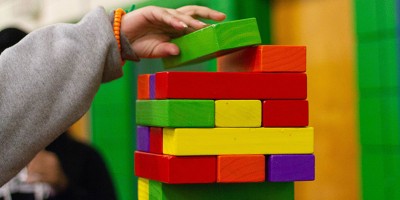

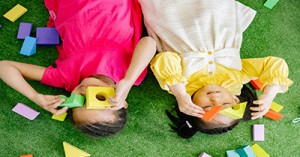


 Here is the list of the EYLF Learning Outcomes that you can use as a guide or reference for your documentation and planning. The EYLF
Here is the list of the EYLF Learning Outcomes that you can use as a guide or reference for your documentation and planning. The EYLF The EYLF is a guide which consists of Principles, Practices and 5 main Learning Outcomes along with each of their sub outcomes, based on identity,
The EYLF is a guide which consists of Principles, Practices and 5 main Learning Outcomes along with each of their sub outcomes, based on identity, This is a guide on How to Write a Learning Story. It provides information on What Is A Learning Story, Writing A Learning Story, Sample
This is a guide on How to Write a Learning Story. It provides information on What Is A Learning Story, Writing A Learning Story, Sample One of the most important types of documentation methods that educators needs to be familiar with are “observations”. Observations are crucial for all early childhood
One of the most important types of documentation methods that educators needs to be familiar with are “observations”. Observations are crucial for all early childhood To support children achieve learning outcomes from the EYLF Framework, the following list gives educators examples of how to promote children's learning in each individual
To support children achieve learning outcomes from the EYLF Framework, the following list gives educators examples of how to promote children's learning in each individual Reflective practice is learning from everyday situations and issues and concerns that arise which form part of our daily routine while working in an early
Reflective practice is learning from everyday situations and issues and concerns that arise which form part of our daily routine while working in an early Within Australia, Programming and Planning is reflected and supported by the Early Years Learning Framework. Educators within early childhood settings, use the EYLF to guide
Within Australia, Programming and Planning is reflected and supported by the Early Years Learning Framework. Educators within early childhood settings, use the EYLF to guide When observing children, it's important that we use a range of different observation methods from running records, learning stories to photographs and work samples. Using
When observing children, it's important that we use a range of different observation methods from running records, learning stories to photographs and work samples. Using This is a guide for educators on what to observe under each sub learning outcome from the EYLF Framework, when a child is engaged in
This is a guide for educators on what to observe under each sub learning outcome from the EYLF Framework, when a child is engaged in The Early Years Learning Framework describes the curriculum as “all the interactions, experiences, activities, routines and events, planned and unplanned, that occur in an environment
The Early Years Learning Framework describes the curriculum as “all the interactions, experiences, activities, routines and events, planned and unplanned, that occur in an environment